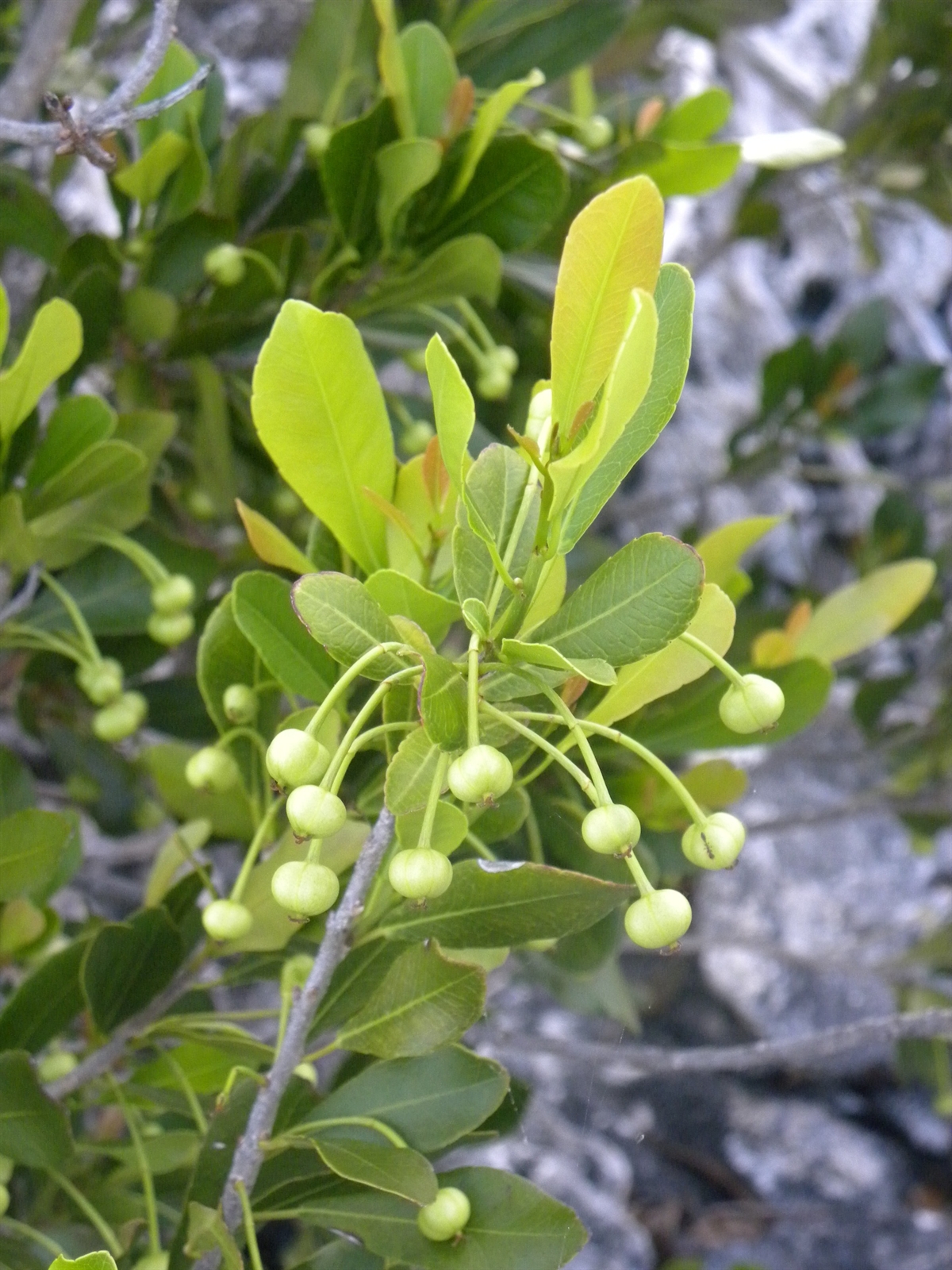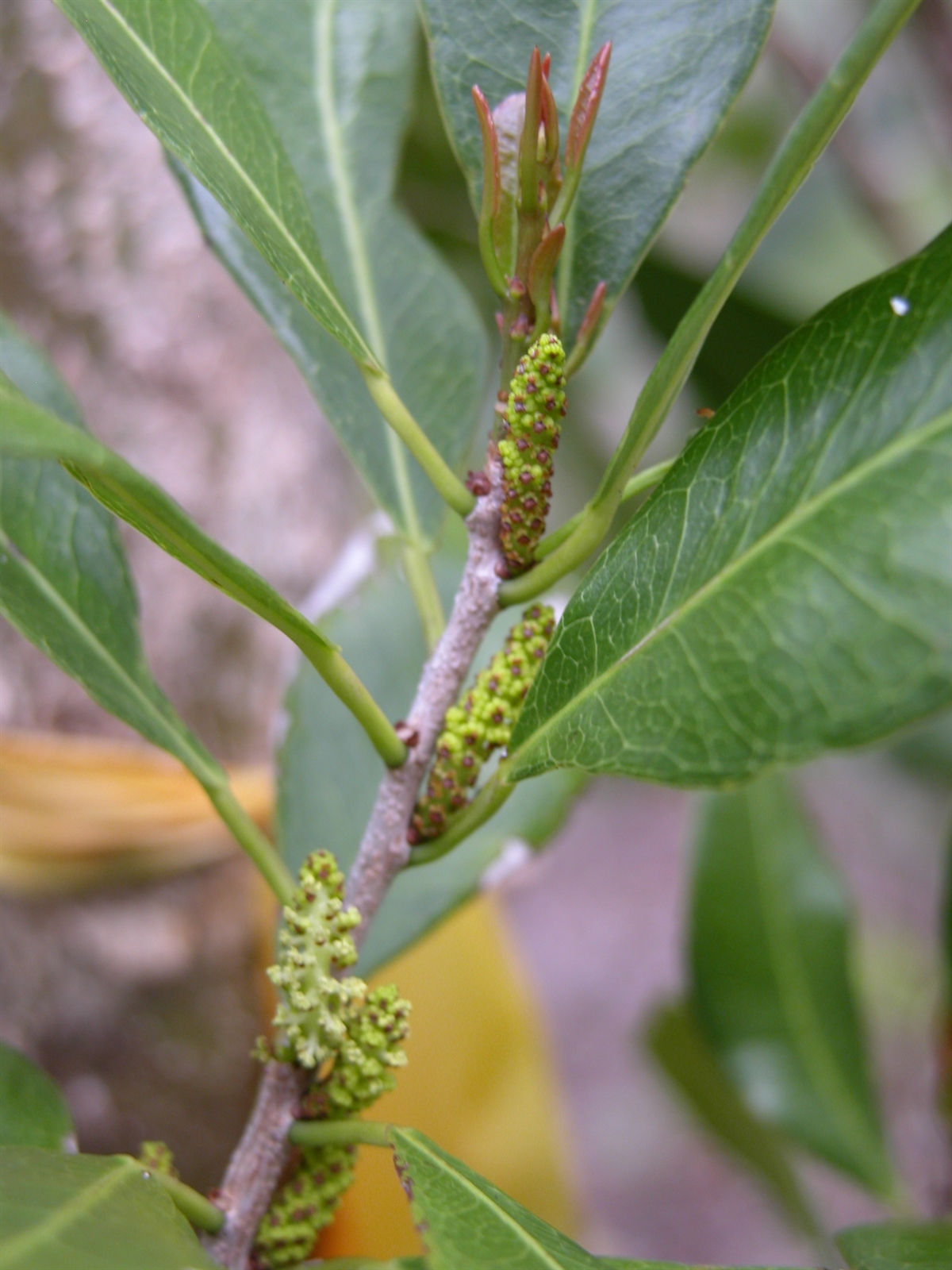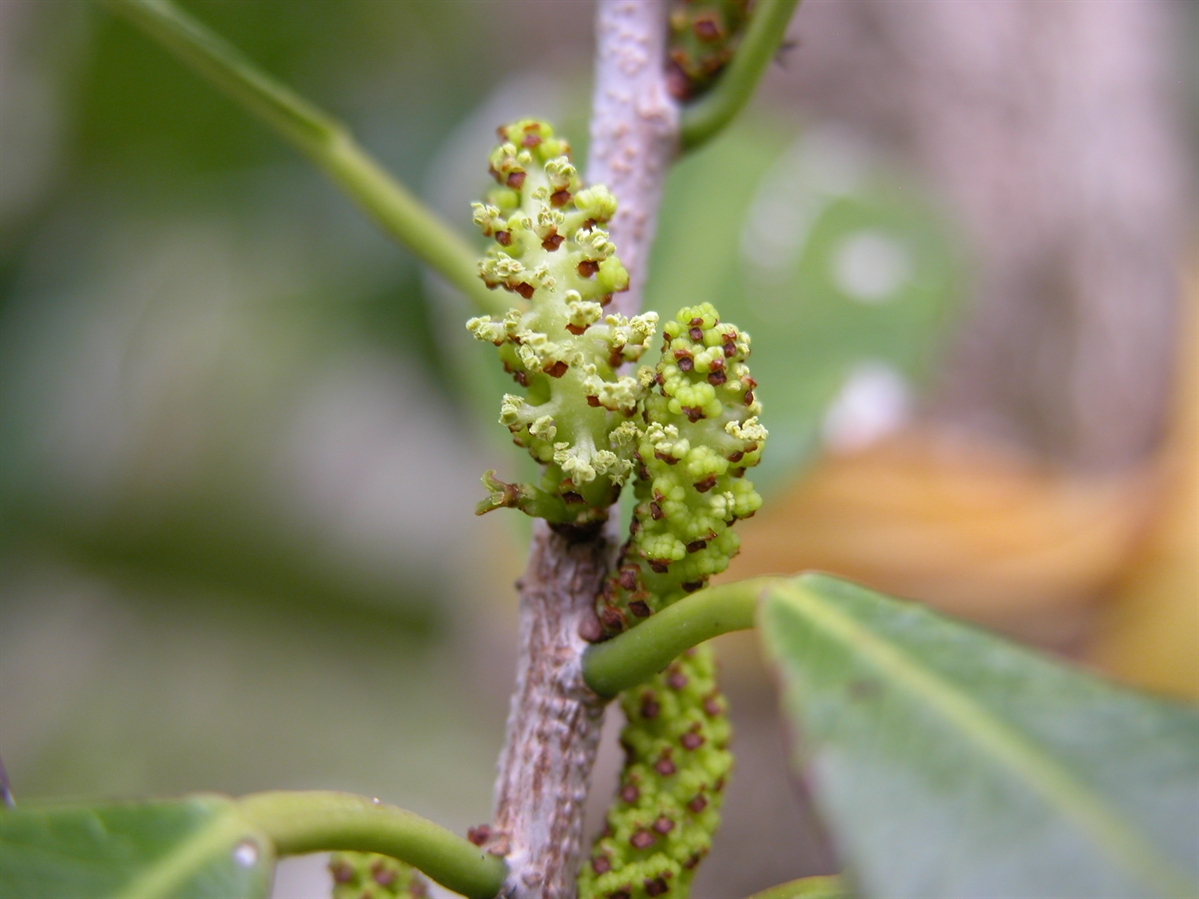Habit: Gymnanthes lucida grows as a shrub to small tree up to 10 meters in height. The leaves are alternately arranged and to 12 cm in length (usually smaller). The leaf base is distinct with a slightly emergent lobe to either side of the leaf base (the lobe can be felt by running a finger from the petiole towards the leaf blade). The leaf is elliptic to oblanceolate with a rounded leaf apex and can be shallowly toothed along the distal margin. In the axil of each tooth is a small gland. New leaves are reddish when developing.
Gymnanthes lucida is dioecious. Staminate flowers are arranged in terminal and axillary racemes and the carpellate flowers are in groups of 3. In staminate inflorescences male flowers have 4 stamens and a nonfunctional ovary. Each flower is subtended by a perianth bract and in groups of 3 subtended by a larger bract.
Carpellate flowers occur in groups of 3, each subtended by a bract, with the center flower possessing a functional superior carpel with 3 locules. The 2 subtending flowers have non-functional stamens and no carpels. A large bract subtends all 3 flowers. The fruit is a capsule at maturity.
Habitat: Gymnanthes lucida grows in Dry Broadleaf Evergreen Formations – Forest/Woodlands/Shrublands/Dwarf Shrublands (coppice, scrublands, dwarf shrublands) with either a limestone or sand substrate.
Distribution: Gymnanthes lucida occurs on all island groups in the Lucayan Archipelago as well as Florida, the Caribbean region, and Mexico south to Central America
Medicinal/Cultural/Economic usage: Gymnanthes lucida is used in the Lucayan Archipelago to treat gastrointestinal problems (stomach pain, diarrhea) and pain (toothaches) as well as hemorrhoids.
Gymnanthes lucida is sought by wood carvers and bowl makers for the interesting contrast between the sapwood and heartwood.
WARNING: The sap can be a skin irritant!


